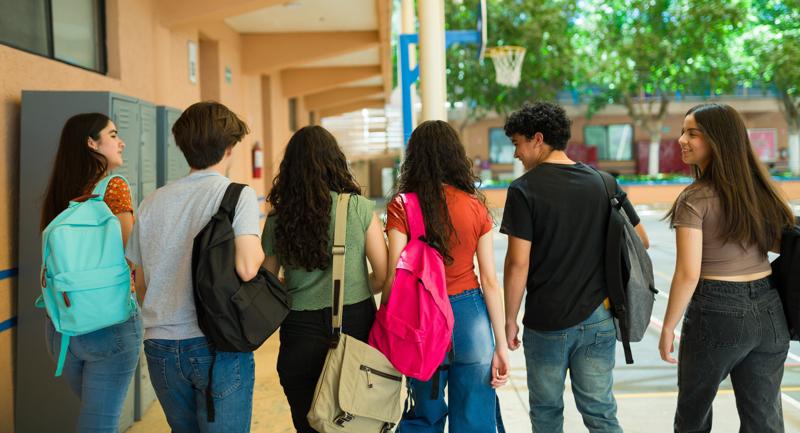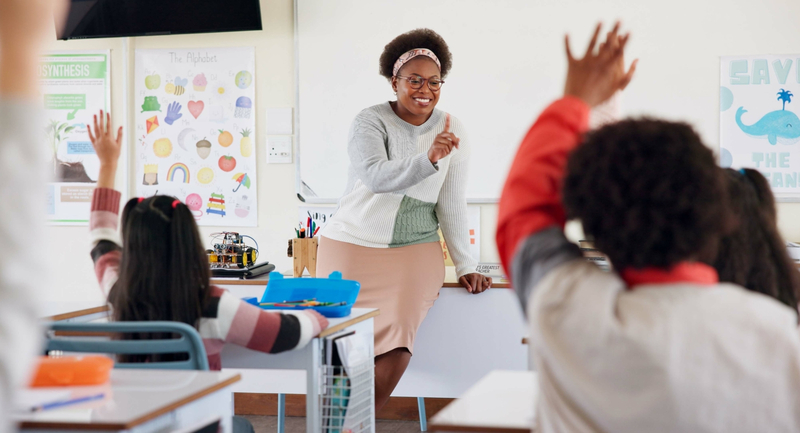One of my favorite students, a mild-mannered, six-and-a-half-foot scholar-athlete, led the entire class in a revolt against me—in the middle of an observation by three of my principals. On top of that, I couldn’t find my lesson plan, and somehow I was being asked to teach AP Calculus after two decades teaching history and English.
Such was my fate at 3:00 a.m. last February.
Nightmares like these reveal how central the emotion of fear is to the practice of teaching. Fear looms large for all of us, but especially for early-career teachers.
This fear comes in myriad forms: Fear that we will fail our students. Fear that we will struggle to control the class. Fear that our students will not like us, or that we will not like them. Fear that we do not know enough content. Fear that we will not be able to keep up with grading. Fear that we will say the wrong thing and end up chewed out by principals, parents, or both. Fear that we don’t have the “right stuff.”
We need to discuss our fears more directly with our peers, mentors, and support networks and address them by developing strategies to manage them, because there is no greater obstacle to a warm, loving classroom community. As philosophers have argued for millennia, fear and love inherently operate in opposition to one another. Students intuitively sense whether adults regard them with compassion or fright. They can quickly tell whether we look upon them sympathetically as full of potential, or apprehensively as some sort of problem or threat. And this quickly has repercussions for our ability to wield authority, build trusting relationships, and cultivate academic skills.
Fear, Love, and Boundaries
The tension between fear and love is especially salient when confronting our most difficult, disruptive students. In the most trying moments, it is critical that we as teachers commit to doubling down on love, what psychologist Carl Rogers referred to as “unconditional positive regard.” It involves a steadfast, implicit commitment to our students that there is nothing they can do to drive away our compassion. We need to communicate, "No matter how ridiculous you act or how threatening you attempt to be, nothing will be able to turn off my light and warmth."
It is a commitment that may not be explicitly stated but is intentionally acted upon. In moments of challenge, it means not reacting explosively, angrily, or sarcastically. It means maintaining an unrelenting buoyancy—perhaps taking a breath, smiling sympathetically, or making a light remark back.
The more consistently we live this loving stance, the less students test it.
It is a performance of unflappability, one we may not always feel, but one we come to inhabit more wholly over time. And the more consistently we live this loving stance, the less students test it.
A common mistake many young teachers make is that unconditional love toward our students means no boundaries. Making a commitment to be loving rather than fearing, however, does not mean low expectations, whether for behavior or academics. There may still be a redirection, a consequence, or even a send-out from class for the most inappropriate behavior, but students will learn that this is part of the business of a focused classroom. Students who misbehave will see our commitment to following up with them one-on-one, welcoming them warmly back into our classrooms the next day. They will realize that even the most flagrant behavior will not be able to extinguish our love for them as fellow human beings.
Building a Culture of Love
What are other practical ways you can move from fear to love in your daily practice with students?
Name and role-play your fears. A first step is finding a person to share your fears with, especially when you are new to this difficult work. A formal coach or informal mentor can listen and validate your fears, emphasizing that they are normal. Fears frequently revolve around exercising authority for the first time with students who inevitably seek to test boundaries. You must identify the moments you anticipate with particular anxiety—e.g., a racial microaggression or a student refusing to leave the classroom. Then, you can develop a plan of action with your coach or mentor and rehearse this repeatedly until you can deploy this script with calm automaticity.
Identify go-to redirections that work. I mostly rely on quick nonverbals (like the “shush” sign) and brief verbal redirects, but if misbehavior intensifies, I will often lean into love even as I am escalating. A public redirect for silly, off-task partner conversations might be: “Y’all crack me up. Please refocus before you lose participation points.” A private redirect midyear for something more inappropriate might sound like this: “I love you. And the next time I hear that language I will need to send you out. Understand?” Every one of us will need to develop our own style, but the key is finding that concise balance of words, tone, and facial expression that conveys both love and meaning business.
Students need to feel known to feel loved.
Get to know your students—for real. Students need to feel known to feel loved. Learn how to pronounce their first and last names, and memorize them within the first week. Learn what makes them tick and what they’re good at. Inspired by educator Matthew Kay, I “burn five minutes” every week on light community builders that allow me to get to know my students more holistically. Maybe a handful of students take turns sharing good news from the weekend, or we do a quick whip-around by sharing responses to a Question of the Week. Have an inside joke with every single student—something secret to laugh about—so they know they are special in your eyes. It could be as simple as the way one student raises his hand when he is excited, or a favorite word another loves to use in her essays.
Lean into feedback. Feedback is a form of love, a sign you care about your students’ work. Give them feedback regularly and quickly. The best feedback is in the moment, as you look over their shoulders during independent work. Collected work should be graded within a week max. Students will see the effort you put into examining their work and will be more likely to bring their best on future assignments. And don't forget to regularly solicit feedback from students. I usually have students take a survey a few months into the school year modeled on Ronald F. Ferguson’s Tripod Project. The following week, I present the survey data to the class and share how I will use their feedback to improve our work together.
Show love to yourself. Even the youngest teachers must commit to self-care so as to avoid the path of teacher martyrdom. It is impossible to maintain equanimity when you are pushing yourself to your limit. Self-care will look different for different people. For me, two decades into practice, midweek exercise is essential to expel negative energies I don’t want seeping into my classroom. When overtired, caffeine often only exacerbates my orneriness, so I will grab my yoga mat during a prep period and seek out an empty classroom for a 10-minute catnap or meditation instead.
Putting Our Nightmares to Bed
What is at the heart of our classroom nightmares? Perhaps we make a mistake or lose our temper, but there is always the gift of tomorrow. And by bouncing back resiliently the next day, owning our mistakes, and extending compassion to ourselves, we can model for students how to respond to setbacks in their own lives.
Our first-year fears never fully leave us. In the end though, our love will win. Love will, as Maya Angelou writes, “Strike away the chains of fear from our souls.” Students will see that we will not give up looking for and seeing their potential. And in doing so, we will help all our students—even our most challenging ones—to see what is lovable inside of them and learn how to extend this compassion to others.








